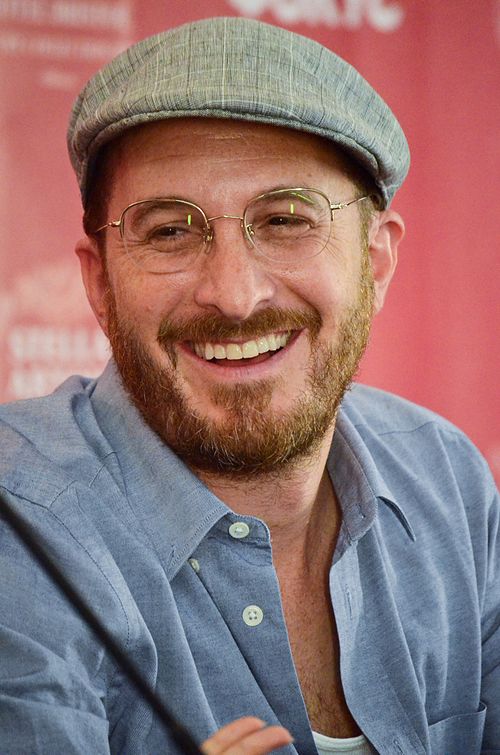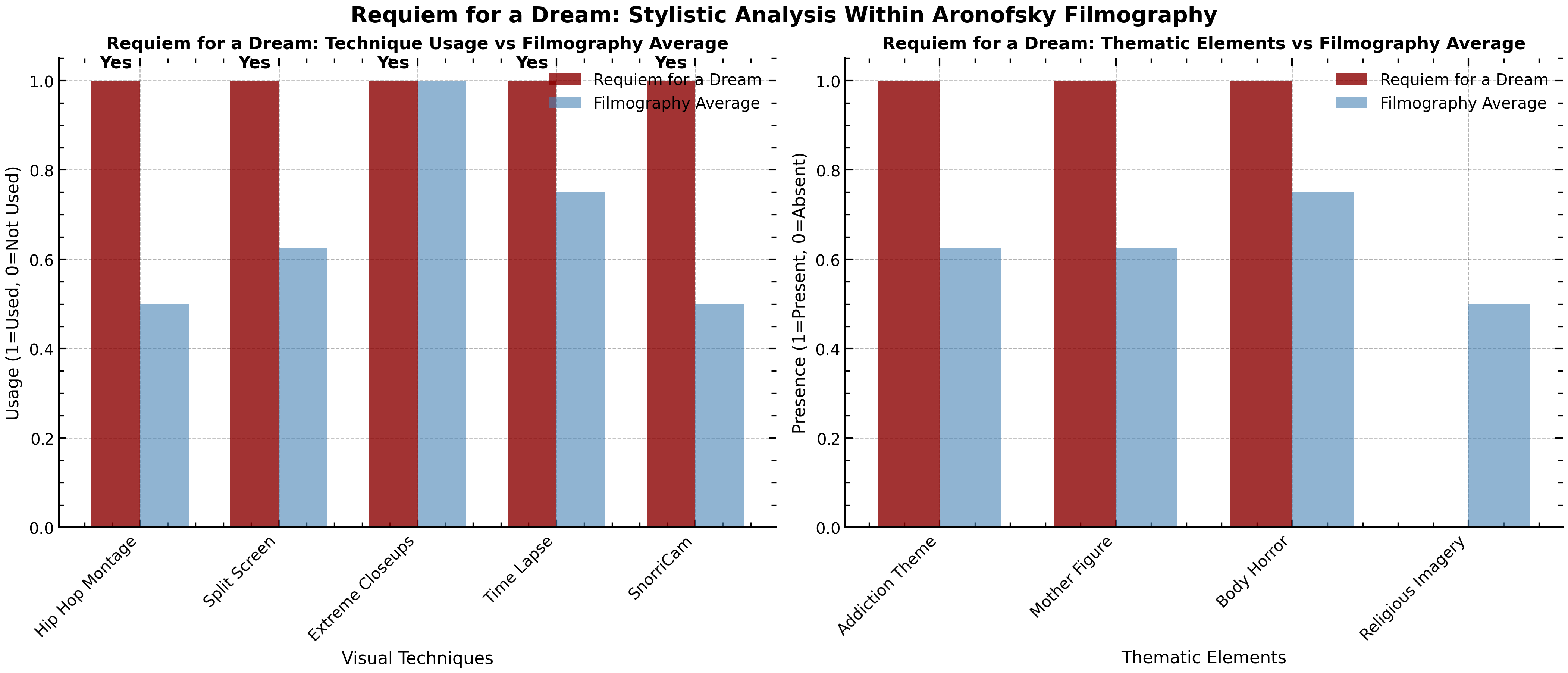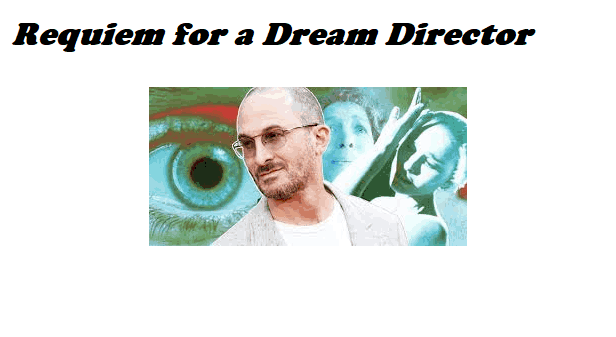Key Takeaways:
- Darren Aronofsky, the requiem for a dream director, is renowned for his bold visual style, psychological intensity, and innovative storytelling.
- “Requiem for a Dream” set new standards for cinematic depictions of addiction, influencing filmmakers and pop culture for decades.
- Aronofsky’s collaborations with key creatives, especially cinematographer Matthew Libatique and composer Clint Mansell, are central to his films’ impact.
- The director’s methods, while sometimes controversial, have redefined independent cinema and psychological drama.
Introduction
What makes a film so unforgettable that it lingers in the mind for decades? For many, the answer is “Requiem for a Dream,” a movie that redefined the boundaries of psychological drama and visual storytelling. But behind this cinematic landmark stands a singular creative force: Darren Aronofsky, the requiem for a dream director. In this post, we explore everything about the requiem for a dream director—Darren Aronofsky—his background, filmmaking style, creative partnerships, and the enduring legacy of his work.
From his Brooklyn roots to his rise as one of the most influential directors of his generation, Aronofsky’s journey is as compelling as the films he creates. Whether you’re a film buff, a student, or simply curious about the mind behind “Requiem for a Dream,” this deep dive will illuminate the artistry, challenges, and impact of a true visionary.
I. Who Is the Requiem for a Dream Director?
A. Darren Aronofsky: Quick Facts
- Full Name: Darren S. Aronofsky
- Birthdate: February 12, 1969
- Notable Works: “Pi” (1998), “Requiem for a Dream” (2000), “The Fountain” (2006), “The Wrestler” (2008), “Black Swan” (2010), “Noah” (2014), “Mother!” (2017), “The Whale” (2022)
B. Early Life & Education
Growing up in Brooklyn, New York, Aronofsky was immersed in the arts from a young age. His parents, both public school teachers, encouraged his creative pursuits, taking him to Broadway shows and classic films. He attended Harvard University, majoring in social anthropology and filmmaking, and later earned an MFA in directing from the American Film Institute Conservatory. These experiences shaped his unique blend of intellectual rigor and artistic daring.
C. Breakout Into Filmmaking
Aronofsky’s debut feature, “Pi,” was a low-budget psychological thriller that won the Best Director award at Sundance and established him as a bold new voice in independent cinema. He soon founded Protozoa Pictures, his production company, and set his sights on adapting Hubert Selby Jr.’s “Requiem for a Dream”.
II. The Making of “Requiem for a Dream”
A. Adapting Hubert Selby Jr.’s Novel
Aronofsky discovered Selby’s novel while at Harvard and was struck by its raw depiction of addiction and longing. He collaborated closely with Selby on the screenplay, blending the author’s poetic language with his own vision and updating the setting to Brooklyn. This partnership ensured the film’s emotional honesty and authenticity.
B. Major Production Challenges
Securing funding was a major hurdle. Despite the success of “Pi,” studios were wary of the film’s dark subject matter. Artisan Entertainment eventually backed the project, but a last-minute budget cut forced tough decisions. Casting was equally challenging, requiring actors willing to embrace the film’s harrowing demands. Ellen Burstyn, Jared Leto, Jennifer Connelly, and Marlon Wayans all delivered career-defining performances.
C. Collaboration with Key Creative Partners
- Director of Photography: Matthew Libatique, Aronofsky’s frequent collaborator, crafted the film’s distinctive look.
- Composer: Clint Mansell’s haunting score, especially “Lux Aeterna,” became iconic.
- Editor: Jay Rabinowitz’s rapid-fire editing and innovative montages simulated the experience of addiction and psychological fragmentation.
III. Darren Aronofsky’s Directing Style in “Requiem for a Dream”
A. Visual Storytelling Techniques
Aronofsky’s style is instantly recognizable. He uses split-screen, time-lapse, and extreme close-ups to immerse viewers in his characters’ experiences. The “hip-hop montage”—a rapid sequence of close-ups and sound effects—compresses complex actions into seconds, simulating the compulsive nature of addiction. The SnorriCam, a camera rig attached to the actor, creates a disorienting, subjective perspective during moments of distress.
 Darren Aronofsky (left) with cinematographer Matthew Libatique, a key collaborator on “Requiem for a Dream”
Darren Aronofsky (left) with cinematographer Matthew Libatique, a key collaborator on “Requiem for a Dream”
B. Sound & Music as Narrative Tools
Clint Mansell’s score, performed by the Kronos Quartet, is integral to the film’s emotional power. “Lux Aeterna” recurs throughout, acting as a leitmotif for hope and despair. The sound design blends realistic and surreal elements, making everyday noises—like a refrigerator’s growl—psychologically charged.
C. Editing Innovations
Aronofsky and Rabinowitz’s editing is central to the film’s impact. Quick cuts, jump cuts, and rhythmic montages mirror the characters’ psychological states. The pacing alternates between frenetic and languid, heightening tension and emotional response.
D. Emotional Impact & Audience Reception
The film’s style is designed to be emotionally overwhelming. Critics and audiences have praised its innovation and intensity, though some have criticized it for being “style over substance.” Ellen Burstyn’s performance, in particular, was universally lauded, earning her an Oscar nomination.
IV. “Requiem for a Dream” in Darren Aronofsky’s Career
A. Aftermath & Critical Legacy
“Requiem for a Dream” premiered at Cannes to a standing ovation and has since become a modern classic. It is frequently cited in discussions of addiction, psychological realism, and the darker side of the American Dream. The film’s reputation has only grown, with many critics and audiences regarding it as one of the most powerful explorations of addiction and despair in film history.
B. Connections to Later Films
Aronofsky’s later works—“The Fountain,” “Black Swan,” “The Wrestler,” “Mother!,” and “The Whale”—all explore themes of obsession, transformation, and psychological struggle. “Requiem for a Dream” established the template for his mature directorial voice, blending visual innovation with emotional intensity.
 Darren Aronofsky, requiem for a dream director, at OIFF 2015
Darren Aronofsky, requiem for a dream director, at OIFF 2015
V. Impact of the Director’s Vision: Legacy & Controversy
A. Cultural Legacy
Aronofsky’s direction has influenced a generation of filmmakers. “Requiem for a Dream” is often listed among the most disturbing yet influential films ever made, setting new standards for visual storytelling and psychological drama.
B. How Aronofsky’s Methods Changed Filmmaking
The film’s use of music and editing as narrative tools has been widely imitated. Aronofsky’s willingness to tackle taboo subjects and push stylistic boundaries helped redefine independent cinema.
C. Criticism and Controversy
Some critics have accused Aronofsky of “style over substance” or excessive bleakness. He has responded by emphasizing the importance of emotional truth and the need to confront uncomfortable realities through art.
VI. Frequently Asked Questions about the “Requiem for a Dream” Director
What inspired Darren Aronofsky to make “Requiem for a Dream”?
Aronofsky was deeply moved by Hubert Selby Jr.’s novel and wanted to capture its raw emotional power on screen.
How does Aronofsky prepare actors for such intense roles?
He fosters a collaborative environment, encouraging actors to explore their characters’ psychological depths and often involving them in the creative process.
What are Aronofsky’s trademarks as a director?
Signature techniques include extreme close-ups, split screens, hip-hop montage editing, and immersive sound design.
How does the director view the film’s grim ending?
Aronofsky sees it as a necessary reflection of the characters’ realities—a cautionary tale about the dangers of addiction and the loss of dreams.
Where can you watch interviews with Darren Aronofsky?
Interviews are available on platforms like YouTube, film festival archives, and DVD/Blu-ray extras.
Did the director ever explain the meaning of specific scenes?
Aronofsky often discusses his intentions in interviews, emphasizing the importance of viewer interpretation and emotional resonance.
VII. The Director and His Collaborators: Building a Vision
A. Key Collaborators on “Requiem for a Dream”
- Matthew Libatique (Cinematographer): Crafted the film’s visual language; has worked with Aronofsky on six films.
- Clint Mansell (Composer): Created the iconic score; collaborated on four films.
- Jay Rabinowitz (Editor): Shaped the film’s innovative editing style.
B. Reuniting with Talent in Future Films
Aronofsky frequently works with the same creative team, fostering a sense of trust and shared vision. Actors like Jennifer Connelly and crew members like Libatique and Mansell have appeared in multiple projects.
VIII. Requiem for a Dream Director: Industry Recognition
A. Major Awards & Nominations
| Award/Festival | Category | Result | Year |
|---|---|---|---|
| Academy Awards | Best Actress (Ellen Burstyn) | Nominated | 2001 |
| Independent Spirit Awards | Best Director (Darren Aronofsky) | Nominated | 2001 |
| Cannes Film Festival | Official Selection | – | 2000 |
| Boston Society of Film Critics | Best Actress (Ellen Burstyn) | Won | 2000 |
Aronofsky’s direction and the film’s technical achievements have been recognized by critics and industry peers alike.
B. Lasting Impact on Independent Cinema
“Requiem for a Dream” helped redefine what was possible in indie filmmaking, inspiring directors to take creative risks and tackle challenging subjects.
IX. Fun Facts & Lesser-Known Stories
- The “hip-hop montage” editing style was pioneered by Aronofsky and has since become a staple in psychological drama.
- The film’s budget was cut by $1 million just weeks before shooting, forcing creative solutions.
- Ellen Burstyn initially hesitated to take the role, questioning who would want to see such a bleak story—her performance is now considered legendary.
- The SnorriCam, used for disorienting shots, was custom-built for the film.
X. Final Thoughts on Darren Aronofsky’s Mastery
Darren Aronofsky’s direction makes “Requiem for a Dream” an enduring masterpiece. His willingness to push boundaries, innovate visually, and explore the darkest corners of the human psyche has left an indelible mark on cinema. Even 25 years later, the film’s influence, brilliance, and controversy continue to spark discussion and inspire new generations of filmmakers.
 Darren Aronofsky, requiem for a dream director, at the “Black Swan” press conference
Darren Aronofsky, requiem for a dream director, at the “Black Swan” press conference
Call to Action & Reader Engagement
What are your thoughts on the requiem for a dream director? Share your favorite scenes, Aronofsky moments, or questions in the comments below! Join the conversation on social media and follow for more in-depth filmmaker studies.
Visualizing Aronofsky’s Signature Style
 Figure: Frequency of Aronofsky’s signature visual techniques across his filmography. “Requiem for a Dream” stands out for its use of all major techniques—extreme close-ups, split screens, hip-hop montage, time-lapse, and SnorriCam.
Figure: Frequency of Aronofsky’s signature visual techniques across his filmography. “Requiem for a Dream” stands out for its use of all major techniques—extreme close-ups, split screens, hip-hop montage, time-lapse, and SnorriCam.
 Figure: “Requiem for a Dream” compared to Aronofsky’s other films in technique and theme density. The film is a peak example of his visual and psychological intensity.
Figure: “Requiem for a Dream” compared to Aronofsky’s other films in technique and theme density. The film is a peak example of his visual and psychological intensity.
